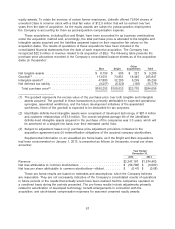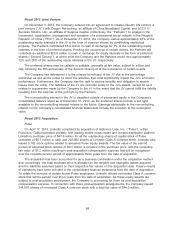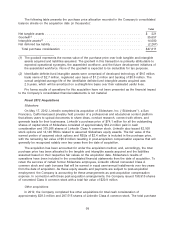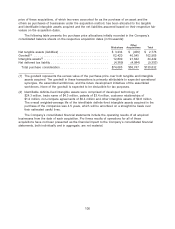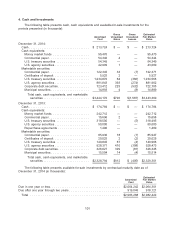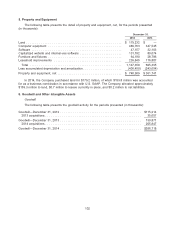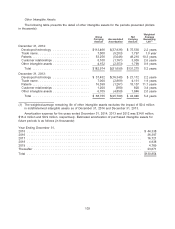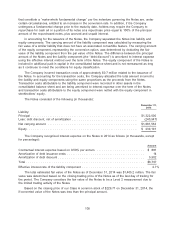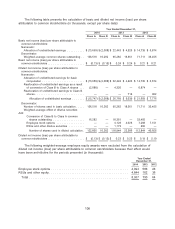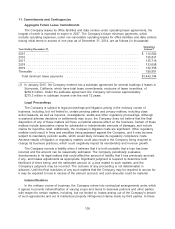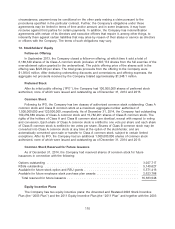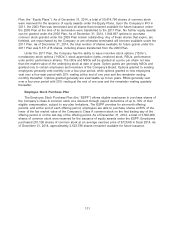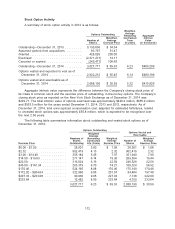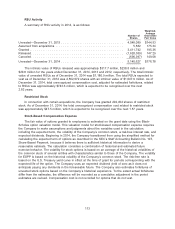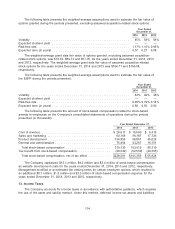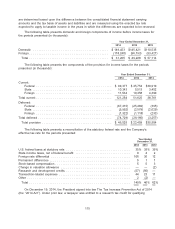LinkedIn 2014 Annual Report Download - page 109
Download and view the complete annual report
Please find page 109 of the 2014 LinkedIn annual report below. You can navigate through the pages in the report by either clicking on the pages listed below, or by using the keyword search tool below to find specific information within the annual report.
9. Other Income (Expense), Net
The following table presents the detail of other income (expense), net, for the periods presented (in
thousands):
Year Ended December 31,
2014 2013 2012
Interest income .......................................... $4,971 $ 2,895 $1,025
Interest expense ......................................... (6,797) — —
Net loss on foreign exchange and foreign currency derivative contracts . . (3,284) (1,626) (672)
Net realized gain on sales of marketable securities ................. 117 127 60
Other non-operating income (expense), net ...................... 63 20 (161)
Total other income (expense), net ........................... $(4,930) $ 1,416 $ 252
10. Income (Loss) Per Share
Basic and diluted net income (loss) per common share is presented in conformity with the
two-class method required for participating securities.
Class A and Class B common stock are the only outstanding equity in the Company. The rights of
the holders of Class A and Class B common stock are identical, except with respect to voting and
conversion. Each share of Class A common stock is entitled to one vote per share and each share of
Class B common stock is entitled to ten votes per share. Shares of Class B common stock may be
converted into Class A common stock at any time at the option of the stockholder, and are
automatically converted to Class A common stock upon a sale or transfer, subject to certain limited
exceptions.
Basic net income (loss) per share attributable to common stockholders is computed using the
weighted-average number of common shares outstanding during the period. Diluted net income (loss)
per share attributable to common stockholders is computed using the weighted-average number of
common shares and, if dilutive, potential common shares outstanding during the period. The
Company’s potential common shares consist of shares issuable upon the release of RSUs, and to a
lesser extent, the incremental common shares issuable upon the exercise of stock options and
purchases related to the 2011 Employee Stock Purchase Plan. The dilutive effect of these potential
common shares is reflected in diluted earnings per share by application of the treasury stock method.
The computation of the diluted net income (loss) per share of Class A common stock assumes the
conversion of Class B common stock, while the diluted net income (loss) per share of Class B common
stock does not assume the conversion of Class A common stock as Class A common stock is not
convertible into Class B common stock.
The undistributed earnings are allocated based on the contractual participation rights of the
Class A and Class B common shares as if the earnings for the year had been distributed. As the
liquidation and dividend rights are identical, the undistributed earnings are allocated on a proportionate
basis. Further, as the conversion of Class B common stock is assumed in the computation of the
diluted net income (loss) per share of Class A common stock, the undistributed earnings are equal to
net income (loss) for that computation.
107


